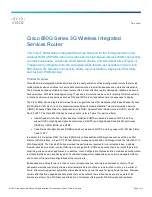
Page 35 of 130
Figure 37: Spudder Probe (Left) & Butt Set (Right)
1.5 Terminal Types
Terminals fall into 3 main categories:
Aerial
Aerial terminals include Ready Access (AC) and SLIC terminals. The Ready Access terminal is a legacy terminal
that is increasingly being replaced with the 3M SLIC terminal.
The RA contains binding post blocks that allow the terminal to be expanded from the standard 6 customer’s
to a maximum of 24 in multiples of 6. Historically, it contains 145B binding post blocks that allow the terminal
to be expanded from the standard 6 customers to a maximum of 24 in multiples of 6. However, for all new
installs and repair visits for xDSL and TELUS TV circuits, the 145B block must be replaced with the Tii 67-2 IDC
block. The 145B block may still be used in rural areas without HSIA.
The SLIC terminal is the current company standard terminal for plastic insulated cable. (PIC cable). The SLIC
contains Raychem DTerminator 2IIDCbinding post blocks that allow the terminal to be expanded from the
standard 10 customers to a maximum of 25 using 5, 10 and 25 pair blocks. They are connected to the pair
with fuse links. Access to the fuse links is by releasing three metal snaps across the top of the terminal. A fuse
link must always be used for electrical protection. A drop should never be connected directly to a cable pair
without a fuse link.
Buried
For underground drops, if there is a terminal it will be a pedestal, although many underground drops are fed
from service boxes and encapsulated buried splices. Pedestals are similar to the RA or SLIC in application and
can be metal or plastic. They can be random access or dedicated. Underground Drops are run to pedestals
either in conduit or as direct buried cable. The wiring in pedestals is very similar to that of RAs and SLICs.
















































